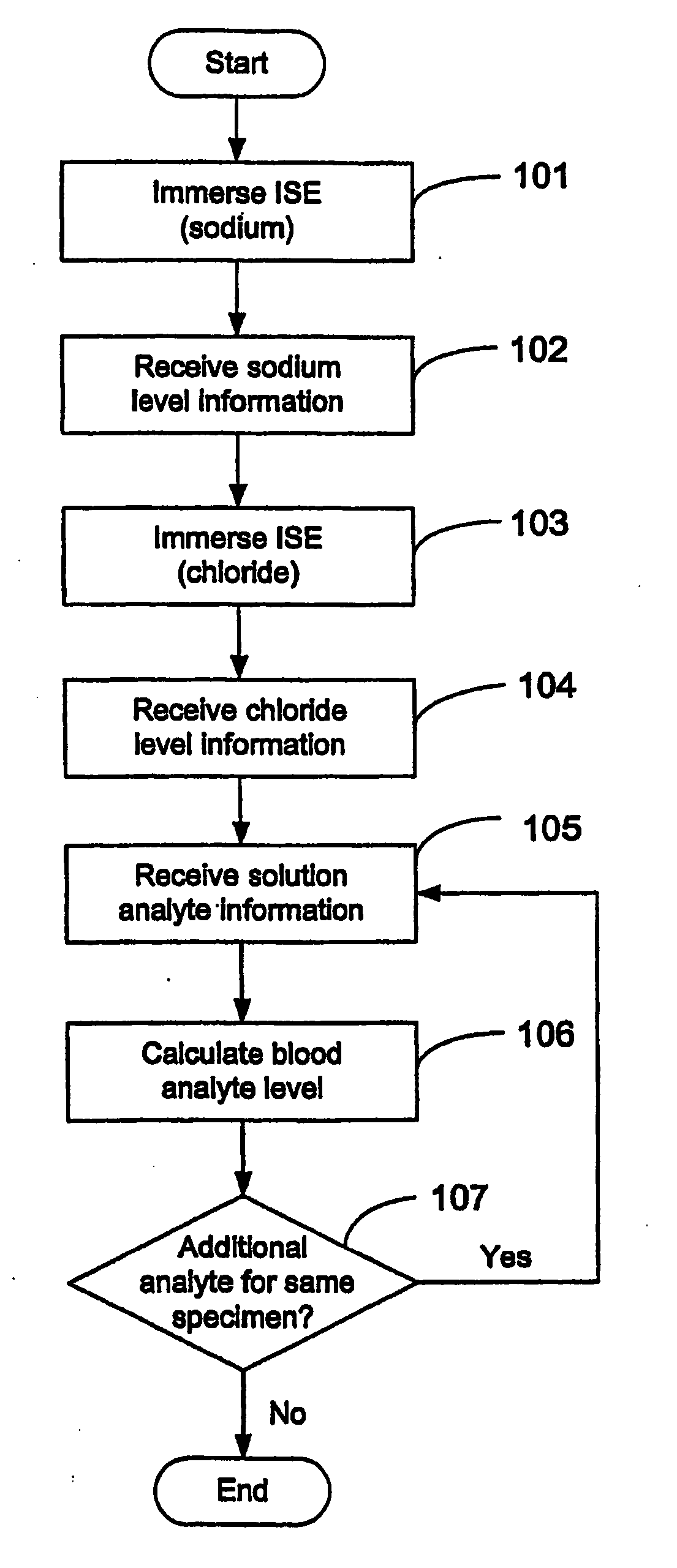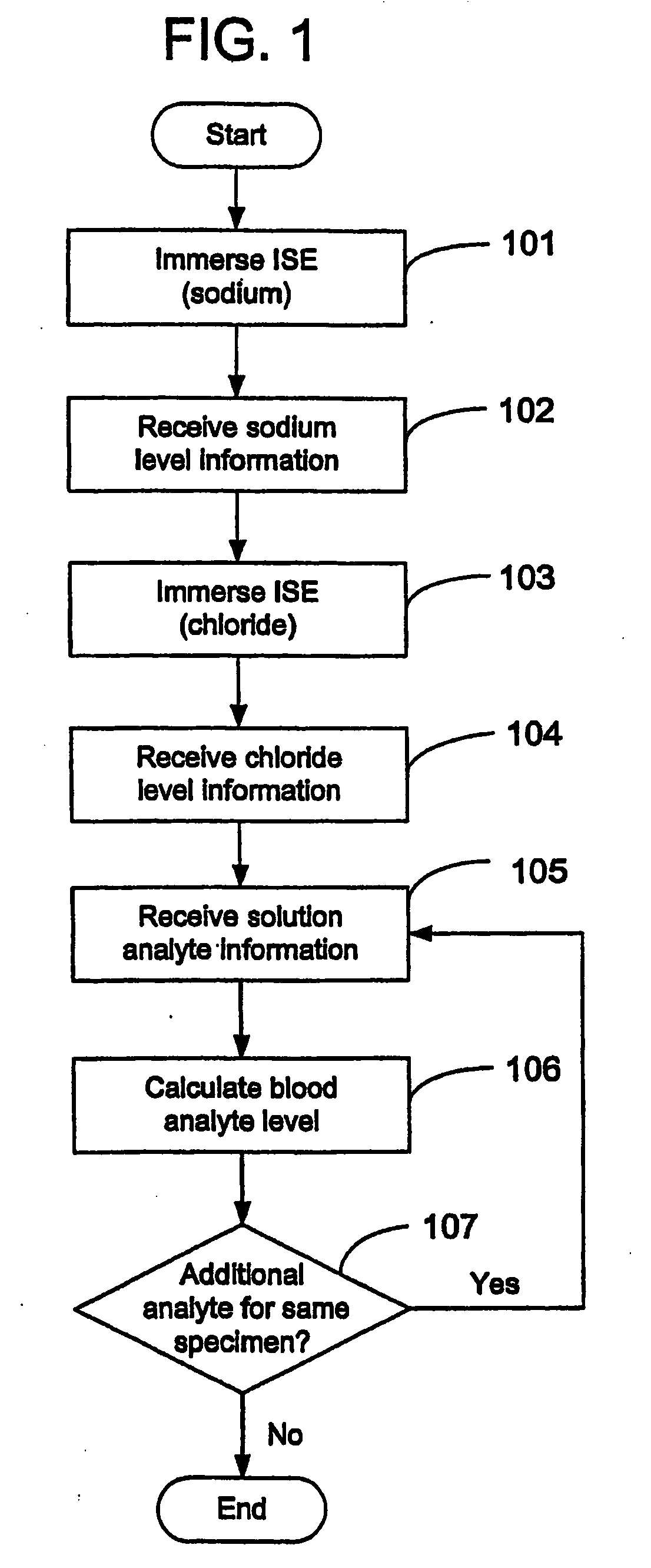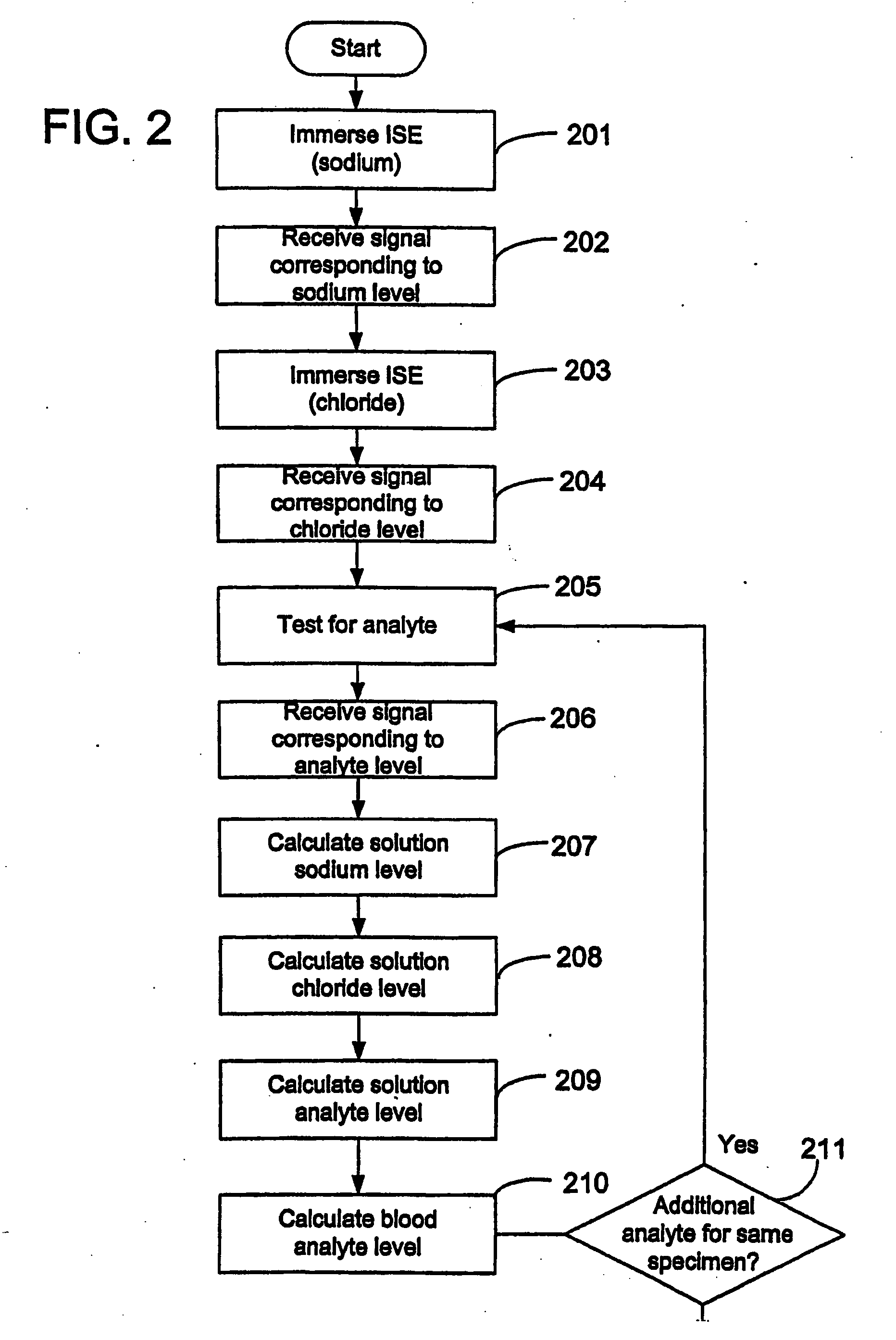Quantitative analysis of a biological sample of unknown quantity
- Summary
- Abstract
- Description
- Claims
- Application Information
AI Technical Summary
Benefits of technology
Problems solved by technology
Method used
Image
Examples
example 2
[0055] This example demonstrates the performance of the invention in the measurement of HDL.
[0056] The same dried spots from the same fifteen patients in Example 1 were used to obtain a measured value for HDL. The normalized HDL level was obtained according to the present invention using linear regression techniques yielding the following function:
[0057] Normalized HDL=HDL / (0.0158+1.060×(Sodium / 139)). The following data was measured or calculated in the same manner as in Example 1.
Mean SerumMean NormalizedNormalizedPatientNo.HDLHDLHDL CV %II1445.7747.032.35A1146.0547.772.17Jo1147.4048.502.12Ja1248.8753.222.23JJ1449.0748.151.68Gr1249.6452.451.62Mi1259.9658.951.69Br1057.2055.832.66Ed1271.0071.090.92Kt1273.0872.461.53TT1376.1675.772.27Ca1278.0175.931.50Bb1178.7773.351.99Ma1187.8484.750.94Tr1191.1586.421.46
[0058] A comparative linear regression was generated for the data points collected in this Example. The linear fit followed the following equation:
Mean Normalized HDL=8.15+0.87×Me...
example 3
[0059] This example demonstrates the performance of the invention in the measurement of triglycerides (TG).
[0060] The same dried spots from the same fifteen patients in Example 1 were used to obtain a measured value for TG. The normalized TG level was obtained according to the present invention using linear regression techniques yielding the following function:
[0061] Normalized TG=TG / ((−0.0136)+0.9307×(Sodium / 139)). The following data was measured or calculated in the same manner as in Example 1.
Mean NormalizedNormalizedPatientNo.Mean Serum TGTGTG CV %Ca1237.6338.761.95Bb1146.8648.551.75A1148.7550.162.73Ja1249.6849.943.31Kt1252.1548.191.32Br1055.0056.564.14Ma1156.0556.402.03II1459.0960.886.22Ed1262.9161.651.25Tr1166.6967.661.63TT1368.7672.1413.37Mi1271.8472.631.62Jo11109.28107.102.27JJ14117.31112.245.03Gr12139.47136.742.13
[0062] A comparative linear regression was generated for the data points collected in this Example. The linear fit followed the following equation:
Mean Normali...
example 4
[0063] This example demonstrates the performance of the invention in the measurement of LDL. The same observations from the same fifteen patients in Example 1, 2 and 3 were used to calculate a value for LDL in serum and a value for LDL in MSS according to the Friedewald formula:
Mean Serum LDL=Mean Serum Cholesterol−Mean Serum HDL−Mean Serum TG / 5
Mean Normalized LDL=Mean Normalized Cholesterol−Mean Normalized HDL−Mean Normalized TG / 5, respectively.
[0064] The following data was calculated (mean serum LDL was calculated from the mean values reported in Examples 1-3)
Mean SerumMean NormalizedNormalizedPatientNo.LDLLDLLDL CV %A1196.5595.305.36Ca12100.6698.821.17Ja12106.9899.222.32Gr12109.88109.002.19Mi12115.81112.902.80Tr11116.35121.213.11Ed12116.80113.761.98Br10118.86118.213.23Il14123.34119.755.72Ma11137.68149.451.72Bb11144.51150.012.12Jo11168.11167.552.66Tt13179.45183.333.33Kt12180.78186.132.19JJ14189.88189.541.89
[0065] A comparative linear regression was generated for the data points ...
PUM
 Login to View More
Login to View More Abstract
Description
Claims
Application Information
 Login to View More
Login to View More - R&D
- Intellectual Property
- Life Sciences
- Materials
- Tech Scout
- Unparalleled Data Quality
- Higher Quality Content
- 60% Fewer Hallucinations
Browse by: Latest US Patents, China's latest patents, Technical Efficacy Thesaurus, Application Domain, Technology Topic, Popular Technical Reports.
© 2025 PatSnap. All rights reserved.Legal|Privacy policy|Modern Slavery Act Transparency Statement|Sitemap|About US| Contact US: help@patsnap.com



